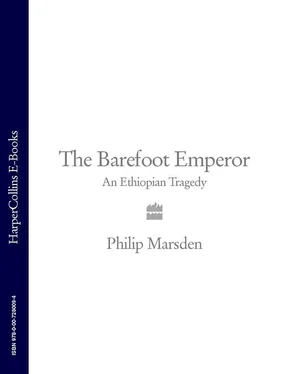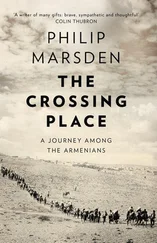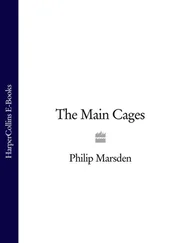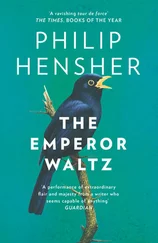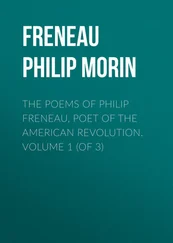hakim –doctor
hudaddie –Lenten fast, fifty-six days long
ichege –head monk of Ethiopia, and being native often more powerful than the Coptic abun
ika-bet – ‘thing house’, repository of church treasures
injera – flat bread
isshi – ubiquitous Amharic expression, meaning OK/of course/ very well
itege – empress or queen
Jan Hoi –Your Majesty
kebbero – large church drum
Kebre Negest – ‘the glory of the kings’, Ethiopia’s mythical charter dating to about the thirteenth century, drawing together many myths including the story of Solomon, Sheba and Menelik their son, and the Ethiopian inheritance of Mosaic law and the Ark of the Covenant
kegnazmach – literally ‘leader of the right’, military and noble rank below dejazmach
kentiba – mayor
kiddus – saint or holy man
kinkob – ceremonial robe
koso – a purgative against intestinal worms, used regularly by Ethiopian highlanders
lemd – cape or tunic
lij – ‘son’ or ‘child’, used as title for young noble males
liqemekwas – high court official
margaf – cotton scarf or small shawl
mekdes – the sanctuary of a church, the section in which is housed the tabot
mesob – free-standing flat-topped basket, on which is spread injera
naib – a Turkish name for the local rulers of the coastal region around Massawa
negarit – war drum, used to call men to arms, as well as acting as a symbol of authority
negus – king
shamma – large cotton shawl
shifta – bandit
shum – regional ruler, military chief
tabot – the sacred object at the heart of each Ethiopian church, never seen by laymen, representing both the Ark of the Covenant and the church’s given saint
tankwa – boat of lashed-together papyrus, used on Lake Tana
teff – indigenous Ethiopian wheat used to make injera
tej – mead
tella bet – beer house
thaler – the Maria Theresa thaler, common currency of the highlands, minted without alloy, and equivalent to about six shillings at this time
Tigrigna – the language of Tigray, northern Ethiopia, derived as Amharic from Ge’ez and the Semitic family of languages
timtim – white turban worn by priests
wat – sauce
weyzero – Mrs
‘ Yetewodros menged .’ The monk’s finger pushed out from the folds of his shawl, far out into the morning, to a shadowy line on the opposite slope. ‘Tewodros’s road.’
After the easy undulations of the plateau, the main road here drops to a place they call the ‘natural bridge’. It’s one of those sudden sights in the Ethiopian highlands that pull you up short, as if the earth’s skin has been ripped aside to expose the skeletal frame of chasms beneath. At the natural bridge itself, beyond the clifftop monastery, the road runs the length of a ridge of rock so narrow that on each side you look down to a shingle bed some 3,000 feet below. To the north is the Tekeze basin, to the south the Abbai, the Blue Nile. The two rivers do not merge until seven hundred miles to the north-west, in the yellowy heat of the Sahara desert.
After the bridge is a new cutting. Within the last few years, as part of the government’s ambitious transport programme, it has been bulldozed and blasted through the hill. To one side, forgotten and unused, is an old grassy track – Tewodros’s road .
In Addis Ababa, no one could tell me what remained of the road. No account exists of it later than its building. I asked scholars at the university, and they were vague – those who had reached Tewodros’s mountaintop fortress of Meqdela had walked in from the south-east. At Bahir Dar University too they knew nothing, nor did a local historian at the school in the emperor’s old capital of Debre Tabor – a school named Tewodros II Secondary School, with the emperor’s spear-carrying image daubed on its classroom wall.
I stepped onto the old road. My boots crunched in its basalt dust. It wasn’t much to look at – a little wider than the mule paths and market routes that criss-cross the highlands. Sumach bushes dotted its course. The inner edge was sliced back well into the rock. A century and a half of rains had rounded its outer edges, washing loose soil and stones down gullies that plunged far into the gorge below.
Yet of all the moments of his extraordinary reign, Tewodros’s building of this road stands out as the most heroic and the most tragic. In October 1867, he burnt his capital at Debre Tabor and with 50,000 people left for the mountain at Meqdela. Week after week, led by the emperor himself, his half-starved army hacked at the ground with their spears, with mattocks, with their bare hands. They felled trees, banked up slopes, rubble-filled streams and smoothed off the rocks with soil. It was a journey of about 150 miles; a good messenger could do it in a few days. It would take Tewodros six months.
Little remained to him at that point, no territory and no support beyond his slow-moving camp. Untouchable on high cliffs, and from the shadows of thick forest, rebels followed his progress. They picked off water-carriers, the sick and the slow, the stragglers. They didn’t dare mount an attack. In part, Tewodros was protected by the strange air of invincibility that had surrounded him throughout his reign. But with him, on wooden wagons, was something more solid – dozens of pieces of artillery, and one in particular, the largest of all, cast in his own foundry a few months earlier, a seven-ton monster he had named Sevastopol. He was building the road for his guns.
Tewodros had another enemy. Years earlier he had chained up the British consul and the man was still in chains, with a number of other Europeans, high on the flat summit of Meqdela. Diplomacy had run its course. Now the British, irritated and affronted, had landed their forces on the Red Sea coast to try to release the hostages. Every week a few thousand more arrived. They were building a port in the desert, landing supplies in vast quantities. They were installing condensers to provide water, building a railway to the mountains. Soon they would be ready to march to Meqdela. All his life, the emperor had dreamed of bringing European technology to his people. Now it was coming.
So Tewodros was hurrying. He was desperate to reach Meqdela before the British, to line the clifftops with Sevastopol and his other big guns, to face the enemy. Hour by hour, his men flattened the ground so that the timber gun-carriages could creak forward over the rocks. If they managed two miles or more, it was a good day.
Here at the natural bridge, they paused for weeks in order to hack out the section across the broken ground, then up the slope towards Zebit. When it was ready, hundreds of men bent to the leather straps that fanned forward from the wagon of Sevastopol, and inch by inch hauled the gun up the slope. Many fell as they did so. From the cliffs the rebels hurled down rocks and spears.
Up on the high plateau again, the going was easier. Like some slow parade of votive statues, Sevastopol and the other guns slid across the plains towards Meqdela. Sometimes at day’s end, with the sun dropping over the short section of new road behind them, and as his men rested in the sudden chill of dusk, Tewodros would climb up and stretch his arms over Sevastopol’s great girth, as if its bulk might correct the fragility of his position. For years his followers had seen him as the incarnation of divine prophecy, a champion of their own Christian and Judaic inheritance. Now they gazed up at him on the gun-carriage and began to whisper of ‘ yetewodros amlak ’– ‘the idol of Tewodros’.
Читать дальше
